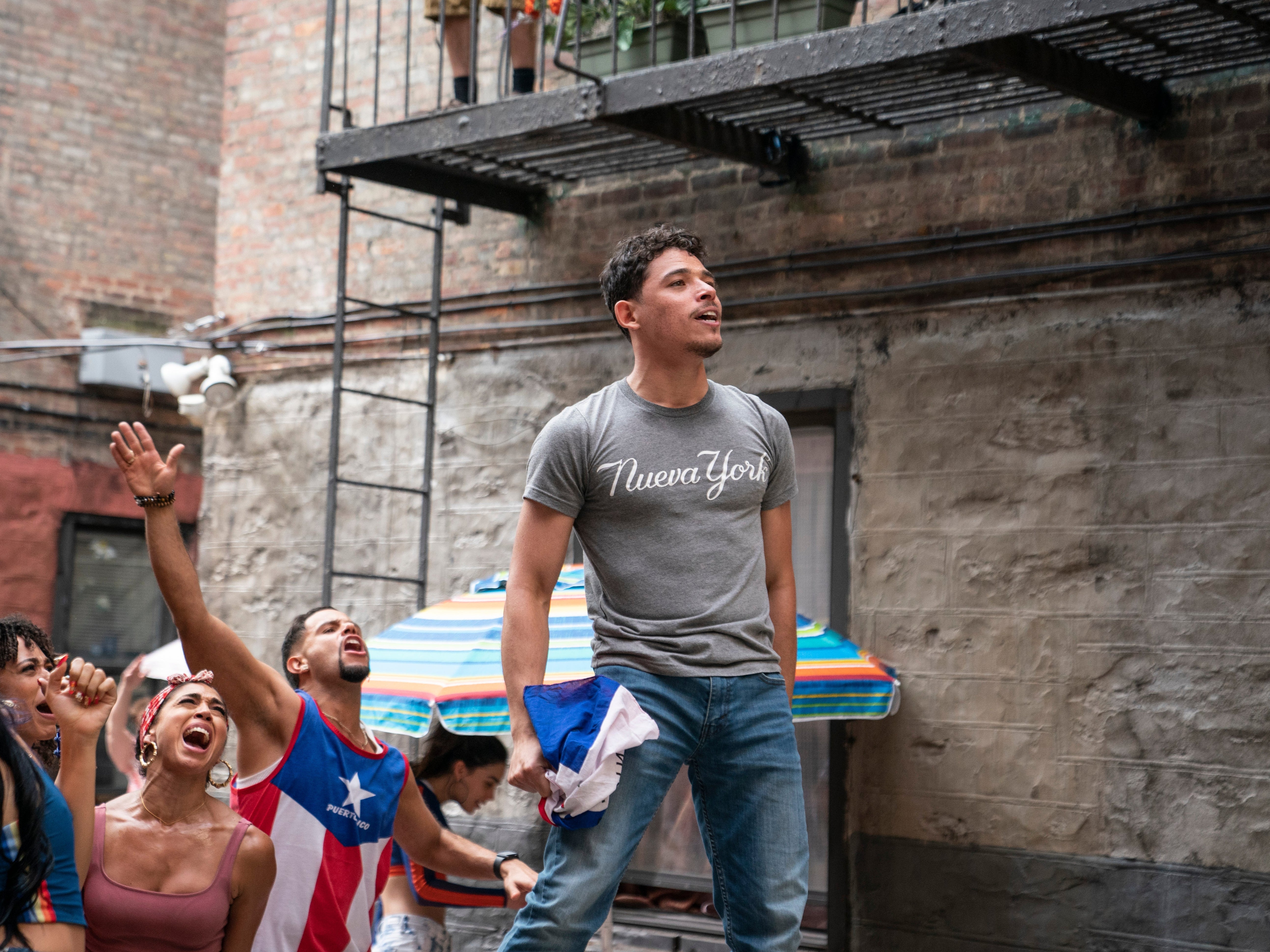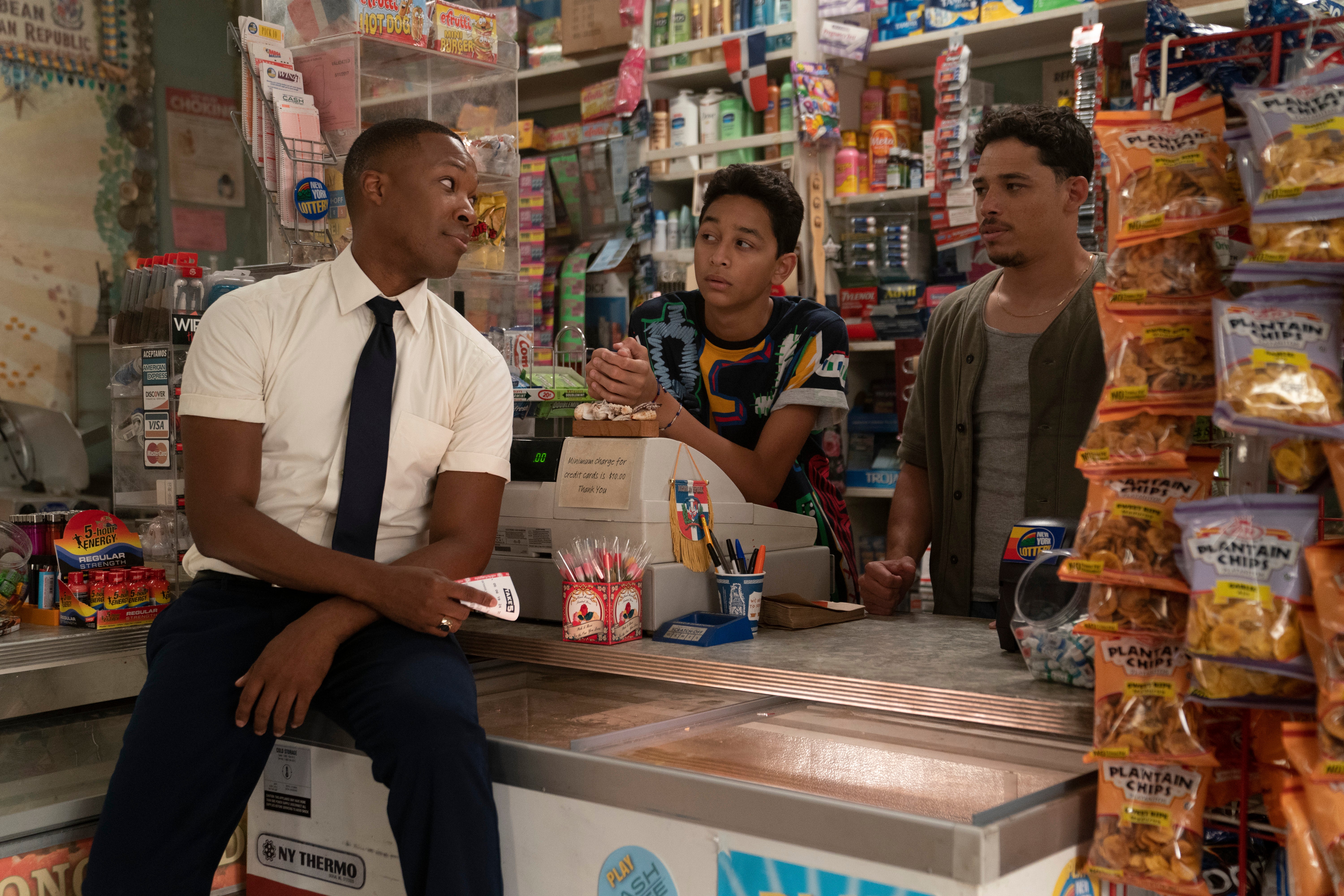In the Heights: Why the film’s lack of dark-skinned Black people looks a lot like colourism
Lin-Manuel Miranda’s hit broadway film is out in UK cinemas. Considering the actual diversity of Washington Heights, the fact that only one member of the ensemble cast is a dark-skinned actor looks like colourism, writes Micha Frazer-Carroll


Your support helps us to tell the story
From reproductive rights to climate change to Big Tech, The Independent is on the ground when the story is developing. Whether it's investigating the financials of Elon Musk's pro-Trump PAC or producing our latest documentary, 'The A Word', which shines a light on the American women fighting for reproductive rights, we know how important it is to parse out the facts from the messaging.
At such a critical moment in US history, we need reporters on the ground. Your donation allows us to keep sending journalists to speak to both sides of the story.
The Independent is trusted by Americans across the entire political spectrum. And unlike many other quality news outlets, we choose not to lock Americans out of our reporting and analysis with paywalls. We believe quality journalism should be available to everyone, paid for by those who can afford it.
Your support makes all the difference.In the Heights was supposed to be a pivotal moment for Latinx representation. The cinematic adaptation of Lin-Manuel Miranda’s Broadway musical – released yesterday in the UK – had the chance to finally portray the diversity of the Latinx community on screen. Revolving around the hopes, family dynamics, friendships and romances of an intergenerational group of Latinxs living in New York’s Washington Heights (nicknamed the “Little Dominican Republic”), it’s certainly unlike anything that has been seen in Hollywood before. It’s even been dubbed a “love letter” to Latinx culture by critics. But Afro-Latinxs, who make up a sizable portion of Washington Heights’ real-life residents, have been quietly expressing their disappointment.
Black members of the community, who have yearned to see themselves represented in this Latinx story, couldn’t help but notice that only one member of the ensemble cast is a dark-skinned actor. Considering the actual diversity of Washington Heights, this looks like colourism – a term coined by author Alice Walker, which describes the privileging of people of colour with lighter skin tones.
Felice León, an Afro-Cuban video producer for African American-oriented outlet The Root, became one of the louder voices in this conversation a fortnight ago. She asked director Jon M Chu: “Where are all of the leading dark-skinned Afro-Latinx folks?” The video interview, which gained over 2 million views, is painful to watch – Chu stumbles over his words and says: “In the end, you know, when we were looking at the cast, we tried to get the people who were best for those roles.” It’s strange, isn’t it, that the best person for the job always happens to look a certain way? It’s almost as if it’s an age-old excuse that employers have used to justify unconscious bias and racist hiring processes.
Colourism is endemic in Hollywood. A study released this year found that only 19 per cent of Black women cast in leading Hollywood roles in the past decade were dark-skinned. This problem is perfectly summed up by a furore that erupted in 2016, when light-skinned actor Zoe Saldana was cast to play the dark-skinned musician Nina Simone. Saldana even darkened her skin and wore a prosthetic nose to mimic Simone’s appearance. Perhaps such “blunders” are made more predictable by the fact that casting directors are overwhelmingly white – even on supposedly “minority” projects like In the Heights (which had two casting directors, both of whom were white).
In 2021, many light-skinned actors now seem to be more aware of this system of disadvantage. Last year, Saldana apologised for playing Simone, saying in a teary Instagram Live: “I should have never played Nina… I thought back then that I had the permission [to play her] because I was a black woman.” And when I recently spoke to Hunger Games actor Amandla Stenberg, who previously walked away from a role in Black Panther due to colourism concerns, she told me: “I see the ways in which the media has sold me, and other light-skinned actors in general, as monolithic representations of a Blackness. It is so damaging and gross… it’s just like sneaky racism.”
To those unaffected by colourism’s complex presence in Latinx communities, the intersection of the two issues might all sound a bit granular – like nitpicking, even. This was certainly the view of light-skinned Puerto Rican actor and performer Rita Moreno, who begrudged In the Heights’ critics in a conversation with presenter Stephen Colbert this week. “It would just be so nice,” she said, “if they hadn’t come up with that and left that alone.”
But this form of racism has real-world roots, and real-world impacts. The ancestors of Black Latinx people were brought to South America and the Caribbean via the transatlantic slave trade. Even though Latin American countries did not have segregationist Jim Crow laws after abolition, many countries still had racial caste systems that disadvantaged those with darker skin. In the Dominican Republic today, there is a stark correlation between skin colour and class status, and a 2003 US study found that Latinx people who identify as white made on average $5000 a year more than Latinxs who identified as Black. Hollywood did not create colourism – it simply reflects the real-world disadvantages that darker-skinned people face.
In some ways, it was predictable that this issue would visit the film adaptation of In the Heights. Similar pockets of dissatisfaction have popped up around the stage production since its debut in 2008 – like in Chicago, where white Italian Jack CeSare was cast in the lead role of Usnavi. This set off a conversation (which is still very much ongoing) about the complications brought about by “colour-blind” casting, and why paying close attention to race may actually be integral to telling minorities’ stories authentically. For the same reason, controversy has also swirled around Miranda’s 2015 musical Hamilton, which cast people of colour as founding fathers who, in reality, owned slaves.
Chu himself also came under fire for perceived colourism in his last film, Crazy Rich Asians. The film, which follows Singapore’s megarich, was accused of sidelining Singapore’s Malay, Indian and other minority groups, which make up around a quarter of the population. Many Singaporean critics argued that the film shouldn’t have been held up in the US as a panacea of diversity. In a Medium essay, Singaporean journalist Kirsten Han wrote: “When it comes to representation, what I would like to see as a Singaporean is something that reflects my country and society in all our diversity and complexity, and helps audiences make connections between our experiences and theirs.” If a movie about minorities’ stories can’t do that, does it really serve the communities it claims to represent?

Watch Apple TV+ free for 7 days
New subscribers only. £8.99/mo. after free trial. Plan auto-renews until cancelled

Watch Apple TV+ free for 7 days
New subscribers only. £8.99/mo. after free trial. Plan auto-renews until cancelled

In the case of In the Heights, some other choices have left Black viewers scratching their heads. Just as Chu shied away from discussing the issue of colourism with The Root, the film itself dodges the more complicated issues related to skin colour raised in the original Broadway musical. In the stage production, the story’s secondary romance, between second-generation Puerto Rican immigrant Nina Rosario (Leslie Grace), and Black taxi-dispatcher Benny (Corey Hawkins) is plagued by Nina’s father’s racism. A key tension hinges on the fact that Kevin Rosario (Jimmy Smits in the film) sees Benny, who is darker-skinned and non-Latinx, as an outsider. But – perhaps in an attempt to “simplify” the story for Hollywood – these complexities all melt away on screen.
The disappointment around In the Heights is not entirely the movie’s own fault. Since there are so few films that tell the stories of Latinx communities, the stakes are much higher when they do finally get told. But in this climate, if a film is going to market itself as a breakthrough for ethnic minority representation, audiences are of course entitled to ask: for whom?
Racism is complex, and can be perpetuated within minority communities – a nuance that is often entirely flattened out in stories that reach the big screen. And for colourism in the industry to meaningfully change, this is a reality that writers, producers, directors and casting directors must meaningfully reckon with, no matter how uncomfortable the conversation may be. While In the Heights may represent a step forward in Hollywood’s portrayal of the Latinx community – as many people have now pointed out – the bar is low. After the conversations ignited across the industry last summer, I think we can all agree it is high time Black and dark-skinned people are given more than crumbs.


